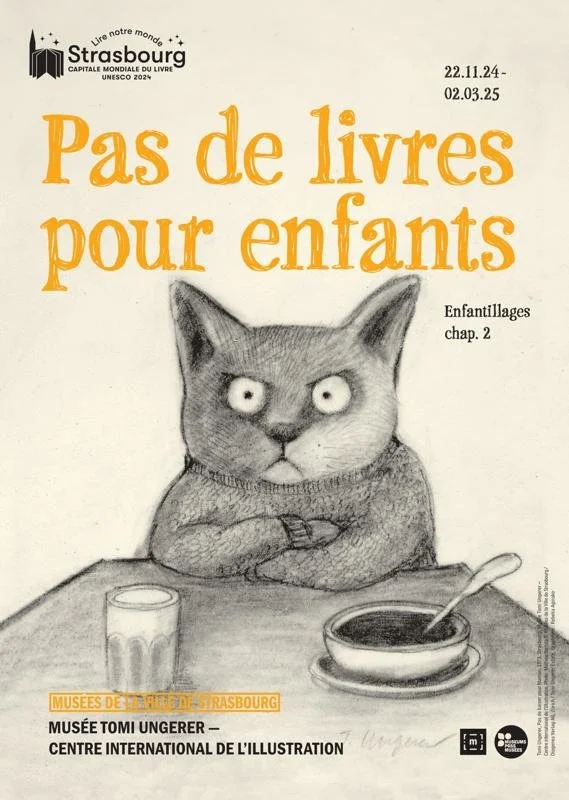“There is no children’s literature, there is literature.”
The exhibition No Children’s Books. Enfantillages Chapter 2 is currently on view at the Tomi Ungerer Museum – International Illustration Centre in Strasbourg, and will run until 2 March 2025. It explores the idea that children’s literature is not a separate category, but part of literature as a whole—a concept famously expressed by François Ruy-Vidal: “There is no children’s literature, there is literature.”
This principle, which gained traction in the 1960s and 1970s, serves as the foundation for the exhibition’s approach. It looks at how children’s books can address complex, poetic, and political themes when young readers are taken seriously. Rather than simplifying content, these works invite children to interpret, question, and construct meaning for themselves.
The exhibition begins with the work of Tomi Ungerer, whose books challenged conventions and expanded the possibilities of illustration and storytelling for young audiences. His influence is felt throughout the show, which also features a wide range of contemporary illustrators who continue to explore the child’s role in literature—not just as a reader, but as a participant.
Themes include the reversal of adult-child authority, the representation of children’s inner lives, and the creation of books in collaboration with children. These works blur boundaries between genres and age categories, offering narratives that are open-ended, layered, and often subversive.
Artists featured in the exhibition include Beatrice Alemagna, Pauline Barzilaï, Blexbolex, Serge Bloch, Lisa Blumen, Guillaume Chauchat, Mathilde Chèvre, Kitty Crowther, Dominique Goblet, Marie Mirgaine, Saehan Parc, Matthias Picard, Mathieu Sapin, Leo Timmers, and Tomi Ungerer himself. Their works span a variety of styles and approaches, but share a commitment to treating children as thoughtful, imaginative individuals capable of engaging with serious ideas.
The exhibition is part of a broader reflection on how illustration and literature intersect with childhood—not as a fixed stage of life, but as a space of creativity, resistance, and possibility. It invites visitors to consider how books can speak to children without speaking down to them, and how the act of reading can be a shared experience across generations.
The show is not a nostalgic look back, but a continuation of a conversation that began decades ago and remains relevant today. It offers a glimpse into a literary world where children are not shielded from complexity, but welcomed into it.

